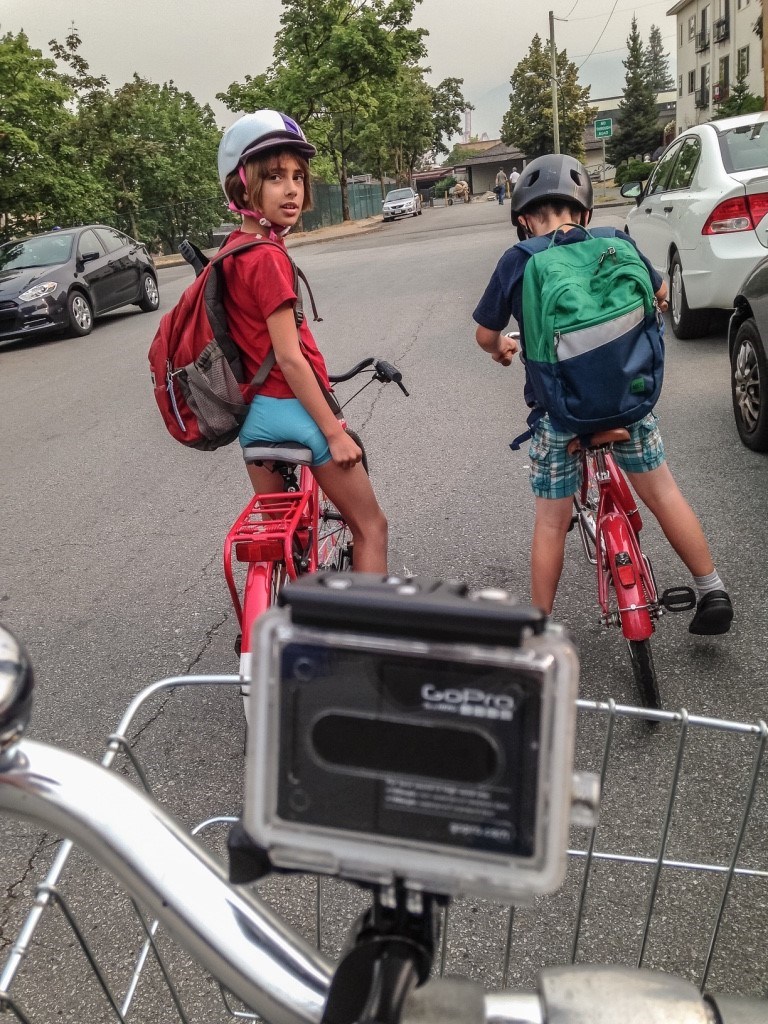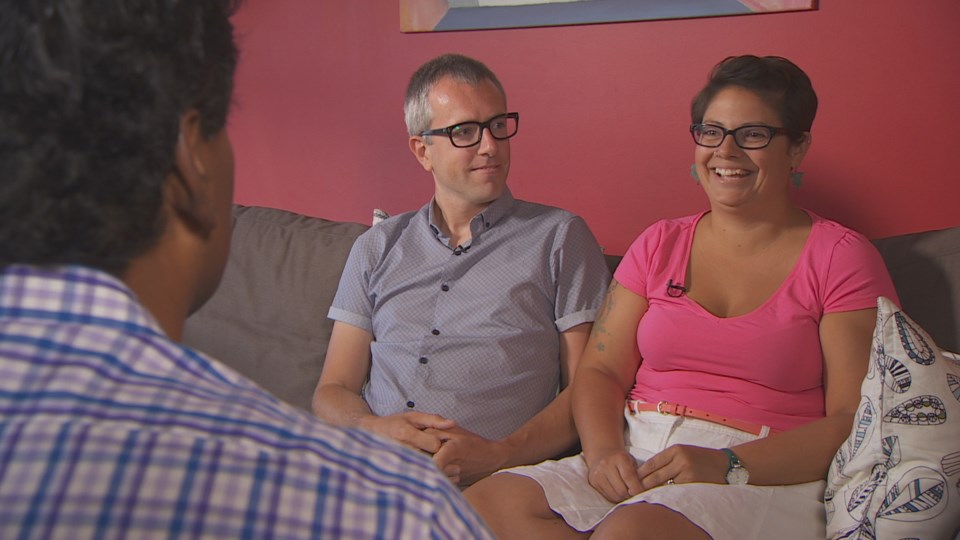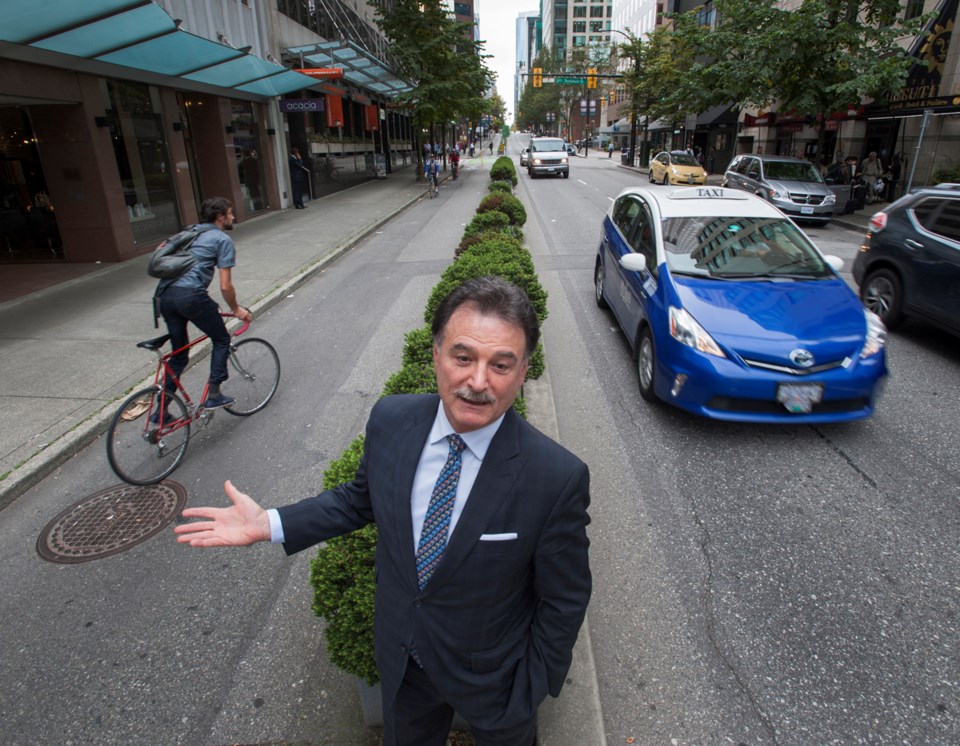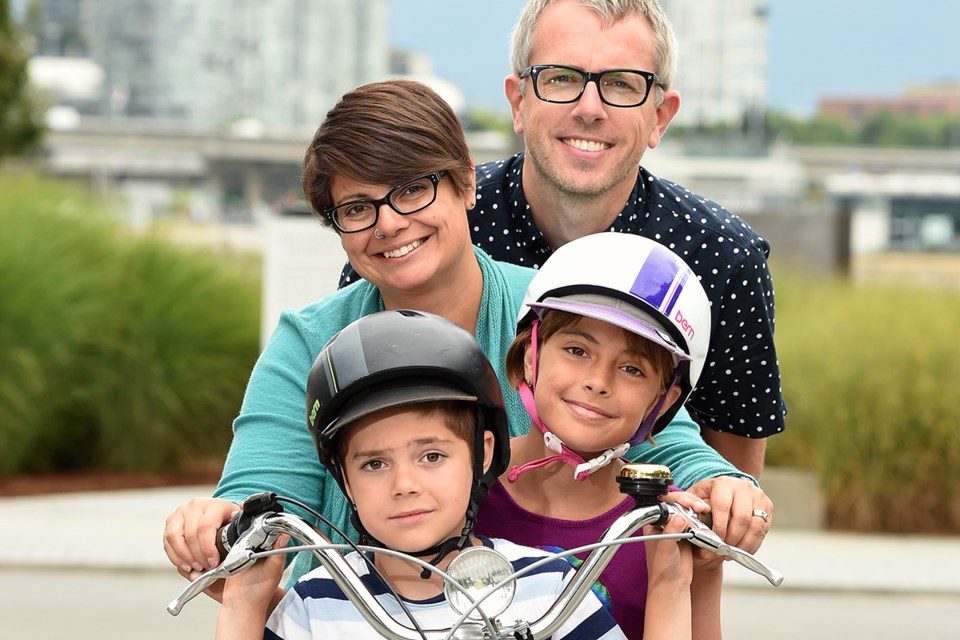In the summer of 2010, our family of four made a decision that would transform our lives for the better though not for reasons we could have ever anticipated.
After moving within a few blocks of the Commercial-Broadway Station the previous year and finding our car collecting dust in the garage, we ditched it. We made all our trips by foot, bicycle, transit and car-share for the rare instance that we needed to borrow one.
This was solely a practical —not an ideological — decision. Living in a compact, walkable neighbourhood afforded us the luxury of having everything within a 20-minute walk or 10-minute bus ride. We quickly discovered both could be replaced with a five-minute bike ride. Above all, this put an extra $800 in our pockets each and every month, an incentive enabled by the transportation choices available in our city. This includes car-share, which ultimately convinced us to give up car ownership for good.
Delitefully car-free
Within months, we began documenting this newfound freedom, mobility and simplicity through the written word, photography and film. And over the past five years, this work has taken us places we never could have imagined as we garnered a global audience on social media and ended up speaking about the (many) triumphs and (few) challenges of our car-lite lifestyle in cities as far away as Auckland, New Zealand. It also formed the basis of Modacity, our fledgling communications firm that now works with transportation agencies across North America, including an impending documentary film series for the Arlington County Department of Transportation in Virginia.

Of the incredible interest that fuelled this crazy adventure, we can only offer the following explanation: our followers are intrigued to view a liveable, life-sized city through the eyes of one (or four) of its users. This has turned our family’s unremarkable day-to-day existence into something truly remarkable, where the simple act of getting from A to B is a memorable, shareable and joyous experience.
READ MORE: Different rules of the road apply to bicycles
READ MORE: Freedom one reason women ride
Never was this more apparent than when we were recently approached by the CBC to appear in an upcoming documentary for The National, their flagship nightly news and current affairs program. The concept was a simple one: “What if a Canadian city such as Vancouver, Toronto or Montreal invested hundreds of millions of dollars into bicycle infrastructure?”
A film crew followed our family around for three days in July as we went about our daily routine and illustrated that very scenario to viewers: What would that investment look like “on the ground” for regular Canadian families?
20 by 2020
Despite recent gains in Vancouver, and a political mandate to continue replacing car trips with other transportation modes, our family remains an anomaly rather than the normality, even in the option-rich community of Grandview-Woodlands and its commercial epicentre, The Drive.
With cycling in particular, city officials could do much, much more. They could be investing more than the measly $5 per citizen per year (in comparison, the Netherlands invests almost $50 per citizen per year). They also could be aiming higher than the current goal of a two per cent mode share increase — from five to seven per cent — by 2020 (benchmarking ourselves with Dallas, Mississauga and Atlanta). If you apply those two metrics to the wider Metro Vancouver region, you’ll see we’re falling further behind the rest of the world with each passing day.
From a user perspective, conditions are incrementally improving but are far from ideal. While Vancouver does have an existing network of bike boulevards stretching across the city, they resemble an afterthought, relegated to residential side streets with very few amenities. When planning our route to the dance studio, supermarket or coffee shop, our family is constantly forced to choose between comfort and convenience or leave the bikes at home altogether, a worst-case scenario when our destination is located on Commercial Drive. Therein lies the problem: If families like ours don’t feel safe using the bicycle as a mode of transportation, they simply won’t.
The CBC documentary also interviews Kay Teschke, a professor at the UBC School of Population and Public Health. Teschke argues that we could and should make a significant investment in bike infrastructure, as they did in Seville, a mid-sized Spanish city with roughly the same population as Vancouver.
In 2009, city officials in Seville looked at an insignificant 0.2 per cent bicycle mode share and decided to do something about it. Over the next three years, they installed 140 kilometres of protected bike lanes. Vancouver built just six in the same period. That 0.2 per cent share quickly went to seven, and then nine, and now it’s 15 per cent of all trips. That’s an 11-fold increase in the number of bike trips, crowning Seville “The Cycling Capital of Southern Europe,” according to the Guardian.
With similar bravado and vision in the next five years, Teschke believes Vancouver could easily grow its bicycle mode share to 20 per cent of all trips by 2020.
Dude, where’s my car park?
Near the end of the filming process with the CBC, an interview with journalist Ian Hanomansing reinforced the perceived downside of moving a family around town without four seats and a steering wheel. Those supposed impracticalities include, but certainly aren’t limited to, distance, weather, terrain, scheduling, safety and the ability to haul larger objects.

To address each of these barriers, we reiterate that living car-lite isn’t black and white. There are plenty of grey areas. We are lucky enough to live in a city that provides us with myriad options, and — given sufficient planning and foresight — can get where we want without a car when practical and borrow one when necessary.
One thing stood out from our interview. When discussing the possibility of installing protected bike lanes on major thoroughfares such as Broadway, Hanomansing immediately and rhetorically asked, “But where will I park my car?”
Indeed, the expectation that every driver should be provided with cheap and convenient on-street parking has become the single biggest barrier to building a more liveable city. We feel entitled to a parking spot on the street directly outside our home, despite by-laws requiring each dwelling unit to supply an off-street space. We feel entitled to a parking spot directly outside a shop, despite ample spaces on side streets and nearby parkades.
This attitude was beautifully illustrated in a September newspaper article "Jury is Still Out on Impact of Downtown Vancouver Bike Lanes."

While designing the Hornby Street protected bike lane, city engineers completed a detailed parking assessment. For every on-street space removed for the bike lane, one was added to a nearby side street or parkade, resulting in no net parking loss. However, this didn’t stop Mike Brascia of Brascia’s Tailors & Menswear from posing for a, angrily gesturing at the missing parking spots on Hornby Street, seemingly unaware of the eight-storey parking garage directly above his right shoulder.
If Mr. Hanomansing took one thing from the half hour we spent together on the morning of July 16, it was this: Our little family does not identify ourselves solely as “cyclists,” nor are we stubborn radicals trying to save the world. We choose the humble bicycle for the majority of our daily trips because it is by far the most practical, efficient and enjoyable way to get from A to B.
More families like ours will choose the healthy act of cycling once our cities don’t just make it safe and convenient, but also make it delightful.
The CBC feature will air later this year on The National.
Chris and Melissa Bruntlett are the co-founders of Modacity and are inspired to live a happy life of urban mobility. Reach them at chris@modacitylife.comand melissa@modacitylife.com.



